Lichen planus: Diagnosis and treatment
Your board-certified dermatologist is trained to diagnose and treat conditions like lichen planus, which can affect your skin, hair, and nails
Your dermatologist’s training includes recognizing the difference between lichen planus and other conditions that can look like it, such as eczema or psoriasis.

How do dermatologists diagnose lichen planus?
Your dermatologist can often diagnose lichen planus by:
Examining your skin, scalp, nails, and mouth
Asking about your symptoms, such as itch, pain, or swelling
Getting a list of your medications
Asking about other medical conditions
Some patients also need a:
Skin biopsy: To do this, your dermatologist removes a small sample from your rash, so that it can be examined under a microscope.
Nail biopsy: If lichen planus may be affecting one or more of your nails, your dermatologist will remove a small sample from the suspected area, so that it can be examined under a microscope.
Blood test to rule out other conditions
Allergy test
If the diagnosis is lichen planus, your dermatologist will decide whether you need treatment.
How do dermatologists treat lichen planus?
Not everyone needs treatment. Your dermatologist may recommend treatment to relieve symptoms like itch or prevent the condition from worsening. The following explains how each area of the body is treated.
Skin: When lichen planus appears on the skin, it may go away on its own. Many people see clearing after one year. For this reason, if you have mild lichen planus on your skin, you may not need treatment.
When treatment is needed to relieve symptoms, such as itch or pain, or to help the skin clear, a treatment plan for the skin may include one or more of the following:
Corticosteroid cream or ointment: This medication can reduce swelling, color changes, and itch. It may be used alone or prescribed along with another treatment.
Tacrolimus ointment or pimecrolimus cream: These medications help reduce bumps and discomfort caused by lichen planus.
Brand names: Protopic (tacrolimus) Elidel (pimecrolimus)
Antihistamine pills: This medication can relieve the itch. Your dermatologist can choose an appropriate antihistamine and adjust the dosage to fit your needs.
Phototherapy: This treatment uses ultraviolet (UV) light to help clear your skin.
Treatment involves standing in a booth called a phototherapy unit while your skin that needs treatment is exposed to a prescribed amount of UV light. When writing your prescription for phototherapy, your dermatologist will carefully calibrate the amount of light required to treat you. This helps prevent possible side effects, such as burning, blistering, and itchiness.
If phototherapy is prescribed, you’ll need to go to a dermatologist’s office or phototherapy treatment center 2 to 3 times a week for several weeks. If this isn’t possible, tell your dermatologist. For phototherapy to be effective, you need to keep all phototherapy appointments.Acitretin: This medication is an oral (take by mouth) retinoid that can clear or markedly reduce widespread rashes, bumps, and other signs on your skin.
Retinoids should not be used during pregnancy, so be sure to discuss this with your dermatologist before starting treatment. If you take acitretin, you should not get pregnant for 3 years after you stop taking acitretin.Brand name (oral): Soriatane
Corticosteroid (injections or pills): If the lichen planus causes thick plaques, lasts a long time, or has caused many bumps or painful sores, your dermatologist might recommend shots. Injections may be repeated after 4 to 6 weeks.
If you have extensive disease, your dermatologist may consider prescribing a short course of corticosteroid pills.Oral (take by mouth) medication that calms your immune system: Some of these medications have been reported to clear or reduce widespread lichen planus on the skin. This type of medication may be an option if other treatment fails to work. Lichen planus can be stubborn.
Scalp: If lichen planus develops on the scalp, it’s called lichen planopilaris, and you want to treat it. Treatment can prevent loss of hair on the scalp, eyebrows, or both. However, treatment is unlikely to regrow lost hair. That’s why you want to treat early.
Treatment can also alleviate symptoms like itching, burning, and stinging.
Your treatment plan will vary with your symptoms, and how the condition has progressed. A treatment plan for lichen planopilaris may include:
Corticosteroid: This medication is prescribed to reduce inflammation, which can relieve symptoms and prevent further hair loss.
You may apply this medication at home or see your dermatologist for injections.
If your dermatologist prescribes a topical (applied to the skin or scalp) corticosteroid, you’ll apply the medication as directed. This could be once or twice a day for 3 weeks and then every other day for about 6 weeks. Applying it as directed helps to clear inflammation and stop further hair loss.
If you need stronger medication, your dermatologist can inject the corticosteroid.
When injected, this medication can reduce symptoms, such as tenderness, itching, and burning, after 1 or 2 treatment sessions.
Lichen planopilaris can be stubborn. If you do not have significantly less inflammation and symptoms within 4 months of receiving the injections, let your dermatologist know. Other treatment may be needed.Hydroxychloroquine (pills) and other medication that calms the immune system: Calming the immune system effectively treats lichen planopilaris for some people. One medication that dermatologists prescribe to calm the immune system is hydroxychloroquine.
Hydroxychloroquine takes time to work, so you’ll need to take it for at least 2 to 3 months before you know if it’s effective.
Possible side effects of hydroxychloroquine include nausea, diarrhea, and stomach pain. This medication can also cause serious eye problems. Tell your dermatologist if you notice blurry vision, floaters in your eyes, or any other changes to your eyes.
If this type of medication would be beneficial, your dermatologist will consider your individual needs, weighing the risks and benefits carefully.Brand name (hydroxychloroquine): Plaquenil
Help with hair loss: Dermatologists understand that some patients want help when they lose hair on their scalp, an eyebrow, or both. One option for the scalp is to camouflage hair loss with a hair styling technique or hair color. Other options include wearing a hair piece, wig, or hair powder.
For patients who have lost eyebrow hair, options include wearing false eyebrows and getting an eyebrow tattoo (a type of permanent makeup).
Mouth: When lichen planus affects the mouth, it’s called oral lichen planus. If you have a mild form, you may not need treatment. Mild disease tends to go away on its own in time. Even with mild disease, your dermatologist or dentist will want to monitor you to make sure that the disease doesn’t worsen.
If oral lichen planus is causing a burning sensation in your mouth, painful ulcers, or rawness, treatment is recommended. A treatment plan typically includes:
Corticosteroid gel or ointment: This medication can lessen symptoms and help clear the disease in your mouth. If this is prescribed, you’ll apply it to the affected areas, as directed, often several times a day. Your dermatologist will explain how to apply this medication inside your mouth. As symptoms let up, you’ll apply the medication less often.
Possible side effects in your mouth include a dry or cottony sensation, burning, or an oral yeast infection.
After 1 month, you should notice some improvement. If not, tell your dermatologist. While this medication helps many patients, sometimes a different medication that you apply inside your mouth is needed.Medication that works throughout the body: If you have symptoms, such as painful sores or erosions in your mouth, you may need an oral (take by mouth) corticosteroid like prednisone or an oral retinoid like isotretinoin. Your dermatologist will consider your overall health, other medical conditions, and more to determine which medication is best for you.
Oral hygiene: Brushing and flossing can feel uncomfortable due to the lesions in your mouth, but good oral hygiene is an essential part of treatment. Here’s what dermatologists recommend:
Gently brush twice a day with a soft bristle toothbrush or sonic toothbrush that is set on low. Use a bland toothpaste, such as one that’s unflavored and doesn’t contain sodium lauryl sulfate.
Floss once a day with tape or floss that is unflavored or a water flosser.
Get a dental cleaning every 3 or 4 months, as recommended by your dentist.
Help finding and avoiding your triggers: Finding what causes your oral lichen planus to flare and avoiding these causes can reduce symptoms and flare-ups. Triggers may include stress, eating certain foods (acidic, spicy, or crunchy), drinking alcohol, or using certain oral hygiene products like flavored toothpaste.
Nails: When lichen planus affects your nails, diagnosing and treating it early are essential. Early treatment can stop this nail disease from worsening. Left untreated, permanent nail damage, discomfort, and nail loss can occur.
To prevent nail disease from worsening, your dermatologist may include one or more of the following in your treatment plan. Keep in mind that nails grow slowly, so it takes time to see results from any treatment:
Corticosteroid injections: This medication can prevent the disease from worsening and allow you to keep your existing nails.
Treatment is generally given monthly until the top half of the nail appears unaffected. When that happens, the injections can be tapered off.
Possible side effects include pain, blood under the nail, and nail separation.Prednisone (pill): This medication can decrease symptoms like swelling and slow an overactive immune system. It may be prescribed when nail disease is worsening rapidly, or lichen planus affects more than 3 nails.
Patients usually take it daily for 4 to 6 weeks and then gradually reduce how much they take.
Possible side effects include weight loss, fatigue, and nausea.Brand names: Deltasone, Prednisone Intensol, Rayos
Acitretin: This medication is an oral (take by mouth) retinoid that can clear or markedly reduce lichen planus on your skin. A low dose of this medication can also treat nail lichen planus.
When treating nails, you continue to take this medication as directed by your dermatologist until there is marked or complete improvement. The dosage is then tapered off. Keep in mind that this medication may not work for everyone. If there is no change in 6 months, your dermatologist will change your treatment.
Retinoids should not be used during pregnancy, as they can harm the baby. If you are pregnant or could become pregnant, be sure to discuss this with your dermatologist before starting treatment. If you take acitretin, you should not get pregnant for 3 years after you stop taking it.
Other possible side effects include extremely dry skin, hair loss, and elevated triglycerides in your blood.Brand name (oral): Soriatane
Other medications as needed: On the nails, lichen planus can be stubborn. To treat your nails, your dermatologist may include other medication as needed.
Genitals: When lichen planus affects the genitals, it can cause discomfort, itch, pain, or scarring. A few patients have developed skin cancer. Treatment can prevent the condition from progressing and reduce symptoms.
Moisturizers and barrier repair creams: These can soothe the discomfort, reduce dryness, and create a protective barrier that can help with healing.
You apply these as directed by your dermatologist.
Your dermatologist will tell you which products to use.Acetic acid soaks: This treatment can reduce bacteria, odor, and crusts. Acetic acid is also used to restore natural acidity to the vagina.
When treating the groin, you may soak clean squares of gauze in acetic acid. Then place the wet gauze in the areas that need treatment, leaving the gauze on for as long as recommended by your dermatologist.
When used to treat the vagina, you insert the medication.
After using acetic acid, you may apply your other medication or moisturizer.
A common side effect is mild burning. If you have severe burning or pain after using this treatment, stop using it and contact your dermatologist.Corticosteroid cream or ointment: This medication can reduce inflammation, which can reduce symptoms.
When used to treat the groin area, you apply the medication as directed once or twice a day. As the area heals, you would reduce how often you apply the corticosteroid.Topical calcineurin inhibitors: This medication can also reduce inflammation, which can reduce symptoms. It’s often used in sensitive areas like the face or groin.
Brand names: Protopic (tacrolimus) Elidel (pimecrolimus)
Antihistamine pills: This medication can relieve the itch. To give you relief, your dermatologist may prescribe one or more antihistamines.
Combination of medication you apply to the genitals and medication that works throughout the body to calm the immune system: If the lichen planus is widespread or medication applied to the area is not working, your dermatologist may create a treatment plan that uses different medications to get the lichen planus under control. You may apply a corticosteroid to the area and take a medication that can reduce inflammation and calm down your immune system. These medications include methotrexate and prednisone.
Brand name (methotrexate): Trexall
Brand names (prednisone): Deltasone, Prednisone Intensol, Rayos
Self-care can help you feel more comfortable
While treatment can help get lichen planus under control, it’s also important to prevent flare-ups. To see the tips that dermatologists give their patients to help them prevent flare-ups and feel more comfortable, go to Lichen planus: Dermatologists’ tips to help you feel better.
Image
Getty Images
References
Fahy CMR, Torgerson RR, et al. “Lichen planus affecting the female genitalia: A retrospective review of patients at Mayo Clinic.” J Am Acad Dermatol. 2017 Dec;77(6):1053-9.
Goldstein BG, Goldstein AO, et al. (section editors: Dellavalle RP, Callen JP). “Lichen planus.” UpToDate. Literature review current through 11/2024. Last updated 8/2024.
Hwang JK, Grover C, et al. “Nail psoriasis and nail lichen planus: Updates on diagnosis and management.” J Am Acad Dermatol. 2024 Mar;90(3):585-96.
Iorizzo M, Tosti A, et al. “Isolated nail lichen planus: An expert consensus on treatment of the classical form.” J Am Acad Dermatol. 2020 Dec;83(6):1717-23.
Lipner SR. “Nail lichen planus: A true nail emergency.” J Am Acad Dermatol. 2019 Jun;80(6):e177-8.
Pelet del Toro N, Strunk A, et al. “Prevalence and treatment patterns of lichen planus.” J Am Acad Dermatol. 2024 Nov 21:S0190-9622(24)03236-5. Epub ahead of print.
Shiohara T, Mizukawa Y. “Lichen planus and lichenoid dermatoses.” In: Bolognia JL, et al. Dermatology. (fourth edition). Mosby Elsevier, China, 2018: 188-90.
Tziotzios C, Lee JYW, et al. “Lichen planus and lichenoid dermatoses: Clinical overview and molecular basis.” J Am Acad Dermatol. 2018 Nov;79(5):789-804.
Written by:
Paula Ludmann, MS
Reviewed by:
DiAnne Davis, MD, FAAD
Elisa Gallo, MD, FAAD
William Warren Kwan, MD, FAAD
Shari Lipner, MD, PhD, FAAD
Last updated: 1/27/25
 Atopic dermatitis: More FDA-approved treatments
Atopic dermatitis: More FDA-approved treatments
 Biosimilars: 14 FAQs
Biosimilars: 14 FAQs
 How to trim your nails
How to trim your nails
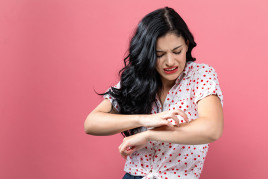 Relieve uncontrollably itchy skin
Relieve uncontrollably itchy skin
 Fade dark spots
Fade dark spots
 Untreatable razor bumps or acne?
Untreatable razor bumps or acne?
 Tattoo removal
Tattoo removal
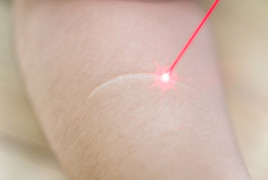 Scar treatment
Scar treatment
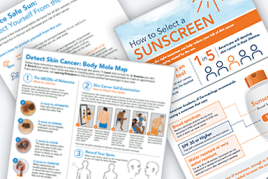 Free materials to help raise skin cancer awareness
Free materials to help raise skin cancer awareness
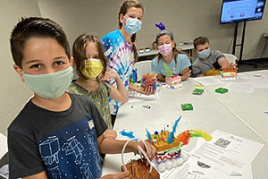 Dermatologist-approved lesson plans, activities you can use
Dermatologist-approved lesson plans, activities you can use
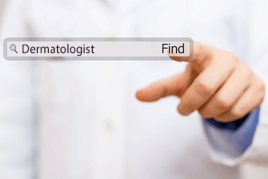 Find a Dermatologist
Find a Dermatologist
 What is a dermatologist?
What is a dermatologist?